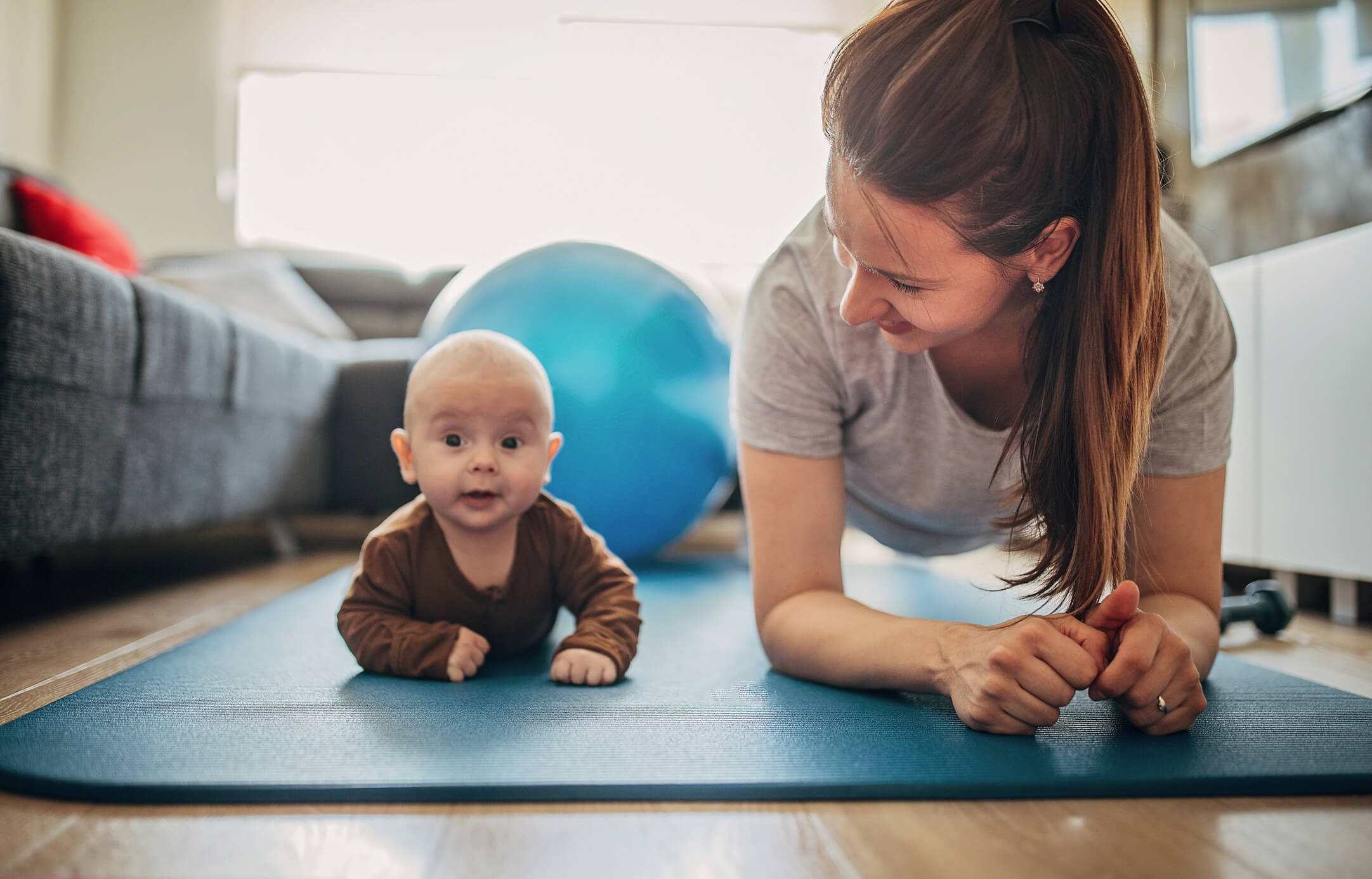Regression
Postnatal recovery
During pregnancy, a woman's body performs at its best for 9 months. Abdominal muscles, connective tissue and, above all, the pelvic floor are massively challenged. Active recovery, ideally under professional guidance, helps to get the body back into shape after giving birth.

Why is gentle regression so important?
While the uterus retracts to its original size on its own after pregnancy, other areas need active support. The abdominal muscles are weakened after childbirth, as is the pelvic floor. In around 20 to 30 percent of all new mothers, the bladder weakens after giving birth. Some women feel this particularly when laughing, sneezing or coughing. Other consequences can include back pain, vaginal or uterine prolapse. Careful recovery is important to counteract these complaints and prevent long-term consequences.
What is postnatal gymnastics?
Recovery gymnastics is an important part of postnatal care. It is usually offered by midwives in open courses. The course units focus on the areas that were particularly stressed during pregnancy. The pelvic floor muscles are usually trained first. The abdominal and core muscles are then strengthened with targeted exercises.
When is the best time to start regression?
In the first period after the birth, the body initially needs rest and protection. You should start regression training 6 to 8 weeks after giving birth at the earliest. By then, the pelvic floor will have stabilized somewhat. It is important that nothing hurts anymore. If you had a caesarean birth, it is better to wait 1 to 2 weeks longer. The wound should have healed well and the scar should no longer hurt by the time you start your postnatal exercises.
Why shouldn't mothers overdo it at the beginning?
Please give yourself enough time and start gently. For 9 months during pregnancy, your body has been preparing for the birth and has undergone numerous changes. It simply needs some time to return to its original form afterwards. Exercising too early, incorrectly or too much can lead to long-term damage and put even more strain on an already stressed body after pregnancy.
How can the partner provide support?
In order for you to take full advantage of the postnatal course, it is helpful if you are not responsible for looking after your child during this time. Your partner can therefore support you by looking after your child during this time. The same also applies if you are doing postnatal exercises at home.
What does a postnatal course cost?
The costs for a recognized postnatal course are covered by statutory health insurance. As a rule, 10 units of 60 minutes each are paid for. Please note possible deadlines: The course must be completed by the end of the 9th month after the birth at the latest in order to be reimbursed by the health insurance company. If the course is interrupted due to the pandemic, this deadline is extended to the end of the 12th month. If you have private insurance, please contact your health insurance provider directly to find out whether and to what extent the costs will be covered.
Where can I find a good postnatal course?
Many midwives, maternity clinics and physiotherapists offer postnatal courses. Enquire locally or directly with your midwife.
You can bring your baby to most courses. However, there are also courses for mothers alone. In addition to face-to-face courses, you can now also find many online postnatal courses on the internet.
Before you start, find out whether the course you have chosen is recognized by your health insurance provider.


